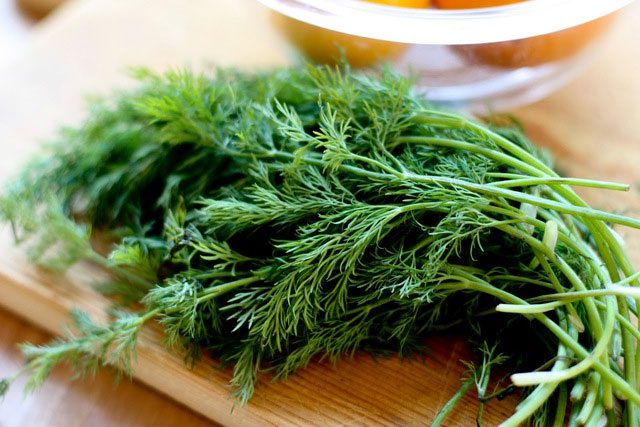Dill (also known as Anethum graveolens) is an essential herb in many Vietnamese dishes. Not only does it enhance the flavor and appeal of food, but this herb is also known for its numerous health benefits.
In Vietnam, dill is a fast-growing herb with a smooth stem, reaching heights of 0.3-1 meter. Its leaves are finely divided into thread-like segments, emitting a mild grassy scent mixed with a hint of anise, although not everyone enjoys its aroma.
The flowers of dill are pale yellow and grow in large clusters. The fruit is oval-shaped, flat on one side, and easily separates into seeds when dry, featuring three prominent longitudinal ribs.

Dill is cultivated almost everywhere in our country.
Dill is grown nearly everywhere in Vietnam, but primarily its leaves are harvested for cooking, serving as a distinct seasoning in fish dishes. In some regions, the fruit is harvested, not for medicinal purposes, but instead as a flavoring in beverages like tea.
In traditional medicine, dill is commonly used due to its many benefits:
Beneficial for the Respiratory System
With a high content of vitamin C, dill helps strengthen the immune system and aids in treating respiratory infections such as coughs, phlegm, and sore throats. According to a study in Italy, if you have a sore throat, gargling with oil made from dill seeds can help loosen phlegm in the lungs and provide immediate relief from throat pain.
Safe for Digestion
Consuming cooked dill leaves daily can help treat constipation and improve digestion. Dill essential oil is also used for hiccups, acid reflux, bloating, or diarrhea due to disturbances in the digestive system.
Wound Healing Properties
Dill is traditionally used for healing wounds and poisonous bites. The essential oil of dill contains components that can stimulate skin healing and even assist in healing deep wounds.
Dill boasts many nutritional benefits and is considered a benign medicinal herb, free of toxins. However, in some cases, this herb may cause symptoms such as allergic reactions, hallucinations, mouth itching, diarrhea, tongue swelling, throat swelling, nausea, and loss of appetite.


















































